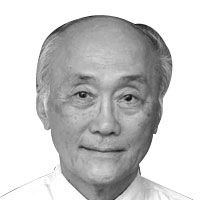The Philippine Stock Market (Part II)

There are various explanations for the current stock market boom in the country. Certainly, the fundamental reasons are on account of better macroeconomic conditions. The country’s fiscal, monetary and balance of payments positions have improved and these developments have been sustained over a prolonged period.
However, some external factors accentuate further the positive influences that are attributable more to luck, like “grace falling from heaven.†The world economy is simply in bad shape so that we look great!
“All stock markets are regulated.†In all countries with stock exchanges, the business is highly regulated. The purchase and sale of company stocks by investors in secondary markets (like stock markets) could be stained by inside information and by unscrupulous traders. For such reasons and more, regulation of stock trading is needed for the protection of the general public.
Even in these days of electronic banking (where the investor merely inputs his trade order in a computer terminal at home or at a business location), brokers are needed where investor accounts are set up to begin with. Brokers facilitate day to day operations of the exchange because it is through them that orders to buy and to sell stocks are made.
Those who trade in the market involve a wide set of institutions and investors. In an increasingly complex economy, the following institutions take part in the stock market: banks, insurance companies, trust institutions (including pension funds), company treasuries and other fund managers with huge investible resources. These are “non-stock broker†participants in the stock market.
Self-regulation of the entities engaged in trading and those who make it work requires a code of conduct. In general, self-regulation hardly ever works. Governmental regulation is needed. Stock markets would even be more volatile and financial collapses would become more frequent phenomena without proper regulation.
“A bit of history.†The Philippine stock exchange traces its origin to the Manila Stock Exchange (MSE) which was founded in 1927. In 1936, the Securities and Exchange Commission (SEC) was created under Commonwealth Act 83. The SEC was the government body tasked to protect the interest of the investing public within the context of stock market transactions and continues to this day as the regulatory overseer of the stock exchange.
With the exception of the war years (1942-1945), the MSE operated as an exchange continuously until it was absorbed into the Philippine Stock Exchange along with – a rival exchange, the Makati Stock Exchange, which was set up in 1963. As Makati became transformed into the country’s financial center, the Makati Stock Exchange overtook the size of the older Manila Stock Exchange even as the latter continued to thrive.
In 1992 under government pressure, the Philippine Stock Exchange (PSE) was incorporated as the vehicle for the merger of the two stock exchanges. This was consummated in 1994 when the SEC gave PSE the license to engage in stock trading, cancelling thereby the licenses formerly granted to the two rival exchanges that had merged to become the PSE.
Major reforms were undertaken to make the domestic stock bourse move to the modern times. Many of these changes were goaded by the securities law that tried to strengthen the governance of the stock market as well as to place it in tune with the pace of global developments in stock market operations.
The other aspect – which is in terms of improving the product mix of the stock market – is still a long way off in future development. The expansion in product offerings depends more on the level of development of the country’s progress and new opportunities that open up and how the PSE takes up the challenges.
A major reform was the adoption of scripless trading in 1996. This came after the reorganization of the central depository for receipts of transactions.
In 2001, Republic Act 8799 (Securities Regulation Act) imposed requirements for the expansion of the board of the PSE in order to increase the representation of non-stock broker interests. The appointment of five independent members of the PSE board made possible a broader representation of the interests of the investing public in the stock market.
Further reforms and initiatives moved the domestic bourse toward more modern practices, accessing improved technology of trading, helping to make trading of securities shift to modern speed as well as electronically secure. Access to modern communications technology was the key to these changes.
“Parallel histories of stock exchanges in East Asia and ASEAN.†The Philippine Stock Exchange, despite recent good notices, is still a small stock market compared to key East Asian stock markets including those in ASEAN. In its company are contemporary stock markets that are among the world’s biggest and most innovative – Hong Kong and Singapore.
In fact, the Philippine market has been the most consistent in that it has operated continuously for many decades without interruption. It has a history longer than most of these other stock markets. The Manila Stock Exchange, established in 1927 is one decade older than the Malaysian stock exchange (1937), from which Singapore’s own bourse was born. Thailand’s was founded in 1961 and that of Indonesia in 1971.
The other contemporary stock exchanges – including those of Hong Kong, South Korea and Taiwan – took off in their development as their economies established high growth levels. The stock markets of all these countries – despite the high volatility of their respective histories – have made many of their citizens much richer.
All these countries had one common characteristic. Their respective prosperities were propelled by high inflows of foreign direct investments and almost all of them were outward looking in their economic policies once they began to embark on their journeys of progress.
“The Philippine stock market in perspective.†The Philippine stock market – despite its recent boom and glory – is the smallest among these stock exchanges. The metrics for making this judgment are numbers that can be compared from these exchanges: (1) number of listed companies; (2) total market capitalization; (3) market capitalization per listed company; (4) market volume turnover per year; (5) number of products offered to investors; and so on.
Thus, the challenges for the future of the Philippine market are many. The growth of the local stock market depends in part on the push for internal reforms within the PSE so that it is in proper tune with the demands of the market place. Much also rests on what the national government does to assure that the economic growth path of the country is sustained.
Disclosure: The CEO and president of the PSE, Hans Sicat, is my son. My views on the market are independent of his thinking. I would have written more on the topic but for the likelihood of potentially misunderstood indelicacy. If I were not an economist naturally drawn to the topic, I would still by personal interest follow stock market developments closely.
My email is: [email protected]. Visit this site for more information, feedback and commentary: http://econ.upd.edu.ph/gpsicat/
- Latest
- Trending




























